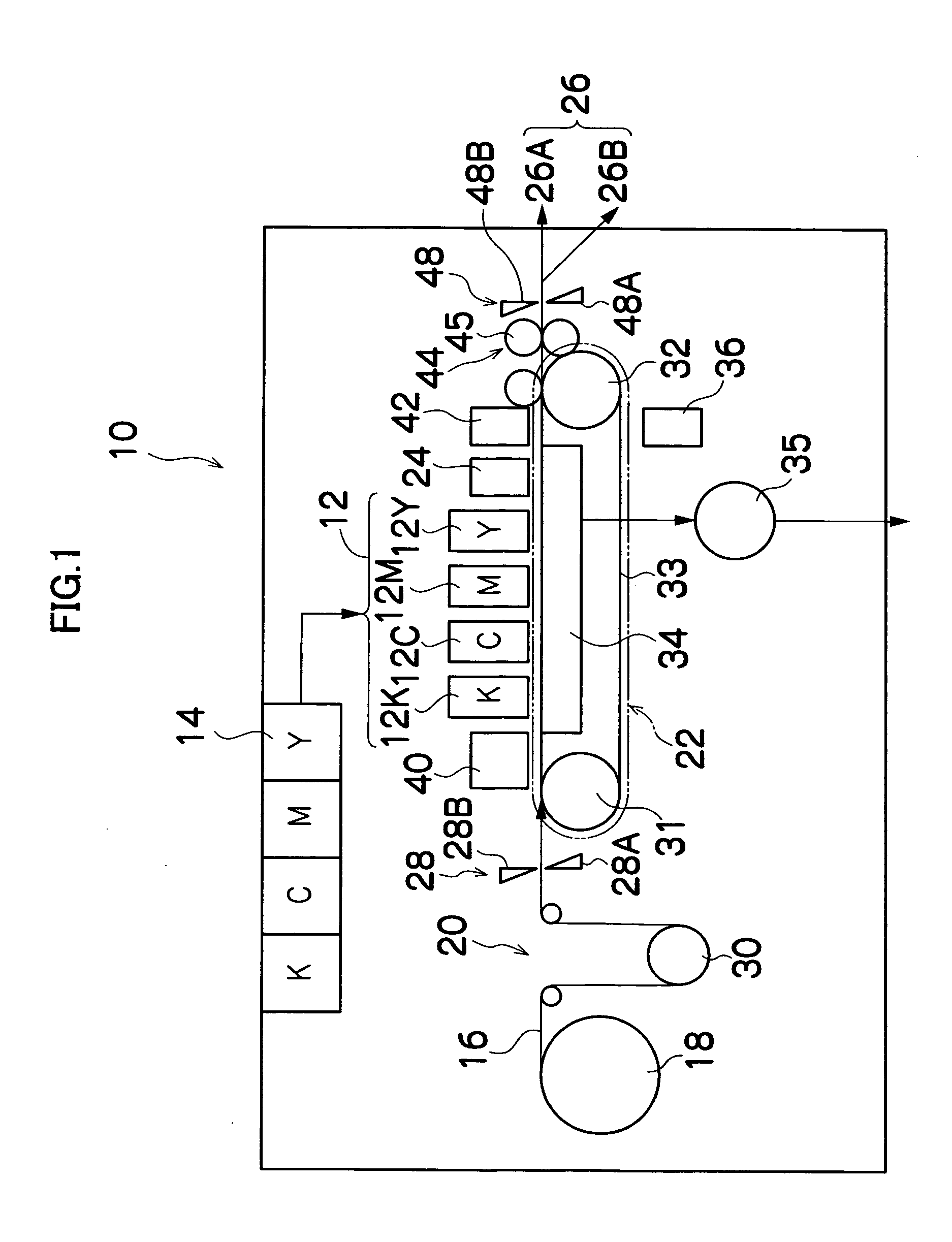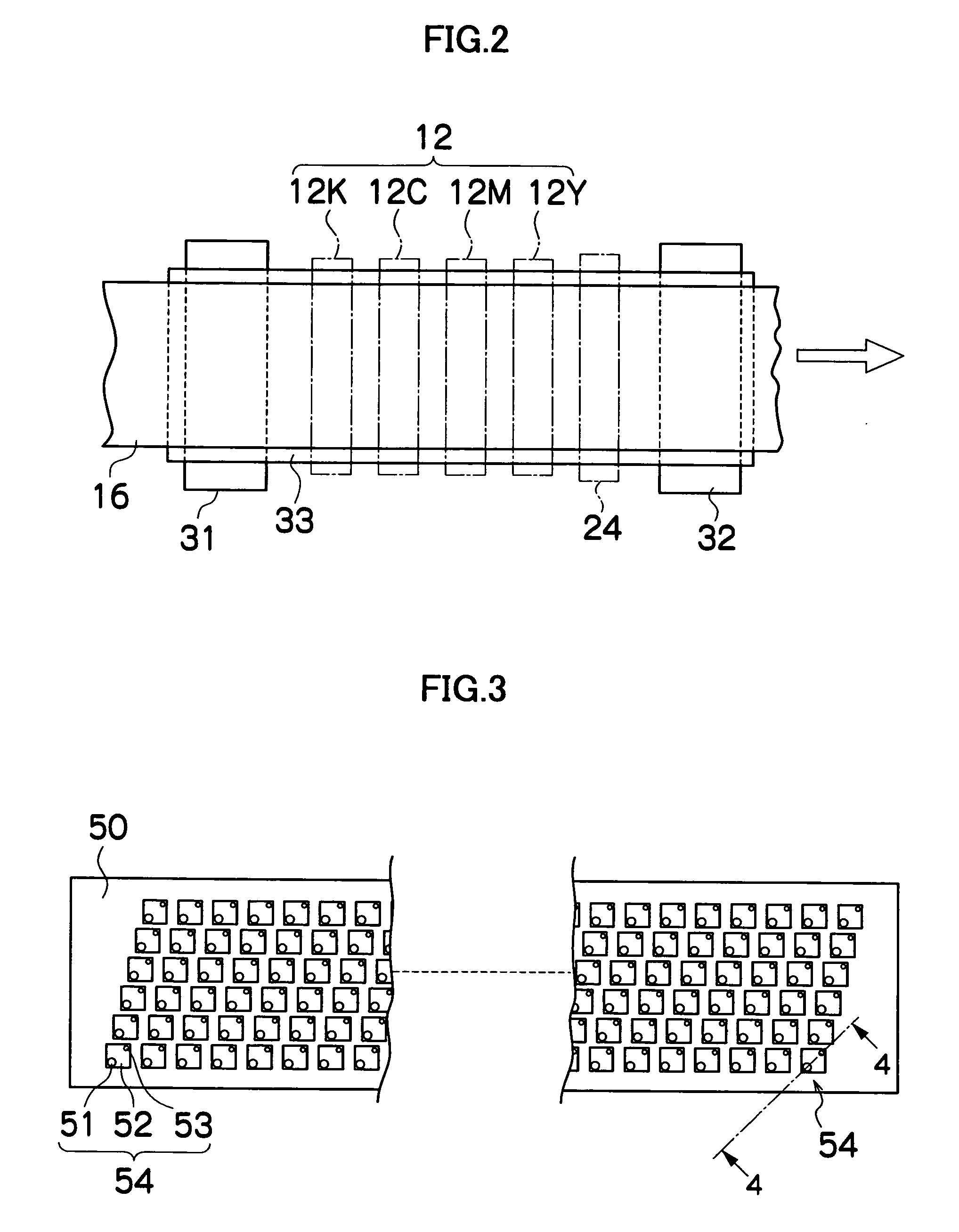Image processing method and image processing apparatus, and image forming apparatus comprising image processing apparatus
a technology of image processing and image processing apparatus, which is applied in the direction of visual presentation, instruments, computing, etc., can solve the problems of affecting the image quality of the image, so as to achieve the effect of suppressing image defects
- Summary
- Abstract
- Description
- Claims
- Application Information
AI Technical Summary
Benefits of technology
Problems solved by technology
Method used
Image
Examples
first embodiment
[0125] Next, a method of forming dots in an image processing method according to the present invention will be described.
[0126]FIG. 8 shows a flowchart of a dot formation method in an information processing method according to a first embodiment. According to the present embodiment, halftoning process is carried out by determining the formation of dots at the dot formation positions according to a threshold value matrix with the use of the dot model described above, and thereby a high-quality image is obtained.
[0127] More specifically, in the dot formation method according to the present embodiment, in forming an image by forming dots on a recording medium, it is determined whether to form a dot at a position (x, y) on the recording medium or not, by comparing the image signal (which may be a density value) I(x, y) at that position (x, y) with a prescribed threshold value T(x, y), in accordance with a sequence (dot formation position sequence) for determining whether to form a dot ...
second embodiment
[0156] Next, a method of forming dots in an image processing method according to the present invention will be described.
[0157] In the second embodiment, dot formation is determined according to an error diffusion method on the basis of dot models such as those described above. In the present embodiment, the determination of dot formation is carried out in a raster sequence. Moreover, the determination of dot formation in the present embodiment is performed by comparing the result of the image density value I(x, y) at the dot formation position, minus the error E(x, y) and the effect XM(x, y) from the peripheral positions, with the threshold value T(x, y).
[0158]FIG. 9 is a block diagram showing the approximate composition of an image processing unit forming an image processing apparatus according to the second embodiment. As shown in FIG. 9, the composition of the image processing unit 190 according to the present embodiment is substantially the same as the composition of the image...
third embodiment
[0192]FIG. 15 is a flowchart showing the sequence of the processing of the dot formation method according to this
[0193] As shown in FIG. 15, the present embodiment is approximately the same as the second embodiment shown in FIG. 10. The steps whose last two digits of the step numbers in FIGS. 10 and 15 are the same, correspond to each other.
[0194] The difference of the present embodiment with respect to the second embodiment is that, in step S320, when the generated error Enew is calculated, the effects on the already quantized positions in the peripheral positions of the dot model M(x, y) are also treated as error, and this error is diffused to the unquantized pixels.
[0195] More specifically, in the case of the example shown in FIG. 11 and FIG. 12, the generated error Enew is calculated as shown in the following equation:
Enew=I(x,y)+E(x,y)+XM(x,y)−M(x,y;22)−M(x,y;11)−M(x,y;21)−M(x,y;31)−M(x,y;12).
[0196] For example, in the case of the example shown in FIG. 13 and FIG. 14, the g...
PUM
 Login to View More
Login to View More Abstract
Description
Claims
Application Information
 Login to View More
Login to View More - R&D
- Intellectual Property
- Life Sciences
- Materials
- Tech Scout
- Unparalleled Data Quality
- Higher Quality Content
- 60% Fewer Hallucinations
Browse by: Latest US Patents, China's latest patents, Technical Efficacy Thesaurus, Application Domain, Technology Topic, Popular Technical Reports.
© 2025 PatSnap. All rights reserved.Legal|Privacy policy|Modern Slavery Act Transparency Statement|Sitemap|About US| Contact US: help@patsnap.com



